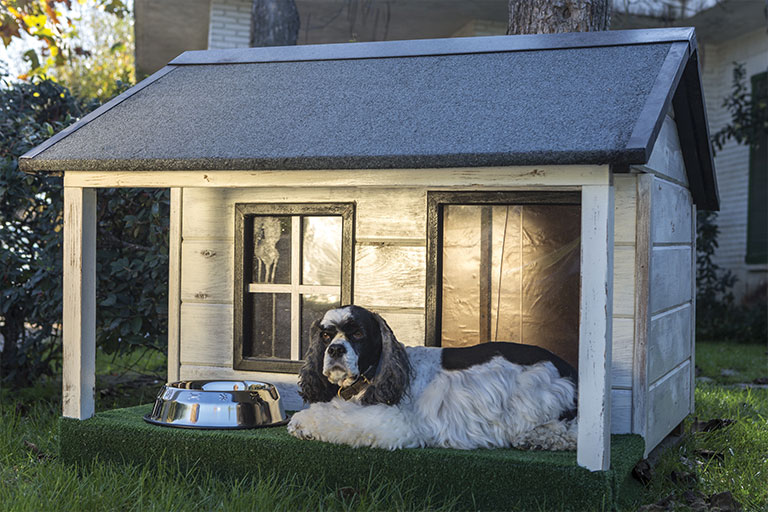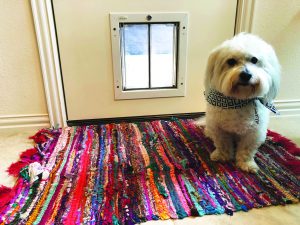By Pat Keegan and Brad Thiessen
We love our pets and we love saving energy! This month, we’re taking a look at three common energy efficiency questions from pet owners.
Q: We’ve thought about installing a pet door. Will this impact my energy bill?
A: Pet doors are convenient for pet owners and pets, but they can impact energy bills. A pet door that is poorly made or improperly installed will create unwanted drafts that increase energy bills and reduce the overall comfort level of your home. The wrong type of door may also be pushed open during high winds.
Consider installing a pet door that is certified by the Alliance to Save Energy or has a double or triple flap. These types of pet doors can reduce energy loss and make life easier for you and your furry friends. The best solution may be a high-quality electronic door that is activated by a chip on your pet’s collar.
It’s difficult to undo a pet door installation, so do your homework before taking the leap. There may be other strategies that will give you and your pet some of the convenient benefits without the downsides.
Q: To save energy, we keep our home cool during winter nights and warm during summer days. How much “hot and cold” can our pup and tabby handle?
A: Cats and dogs can handle the cold better than humans. The U.S. Department of Agriculture, which regulates facilities that house cats and dogs, requires these facilities to maintain temperatures above 50 degrees. Some exceptions are allowed for breeds accustomed to the cold or if some form of insulation for the animals is provided. Your pet’s tolerance really depends on their breed and the thickness of their coat.
A report by the Purdue Center for Animal Science says that Siberian huskies can tolerate temperatures below freezing, but some short-haired dogs require temperatures of 59 degrees or higher. Older animals may require warmer temperatures than younger ones.
During summer, cats and dogs handle the heat in different ways. Cats do a good job of reducing their activity level as temperatures climb, but both cats and dogs can get overheated. The USDA says that room temperatures in facilities housing dogs or cats should not exceed 85 degrees for more than 4 hours at a time.
Q: Is it okay if my cat or my dog sleeps in the garage overnight?
A: USDA rules suggest this should be fine if your garage temperature stays between 50 and 85 degrees. Pets might be able to handle a lower temperature if they have a warm, insulated bed.
Heating or cooling your garage for your pet could lead to extremely high energy bills, which makes sense because an uninsulated, heated garage could easily cost more to heat than a home. A better solution is a heated pet house, which you can purchase from multiple retailers. If you’re willing to spend a little more, you can even find climate-controlled pet houses that include heating and cooling options.
You can also purchase heated beds for cats and dogs. Some beds use as little as 4 watts of electricity, so they won’t drain your energy bill.
We hope these tips will be helpful as you work at saving energy while caring for your favorite furry friend!
This column was co-written by Pat Keegan and Brad Thiessen of Collaborative Efficiency.



